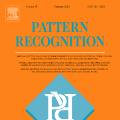Nowadays, the amount of heterogeneous biomedical data is increasing more and more thanks to novel sensing techniques and high-throughput technologies. In reference to biomedical image analysis, the advances in image acquisition modalities and high-throughput imaging experiments are creating new challenges. This huge information ensemble could overwhelm the analytic capabilities needed by physicians in their daily decision-making tasks as well as by biologists investigating complex biochemical systems. In particular, quantitative imaging methods convey scientifically and clinically relevant information in prediction, prognosis or treatment response assessment, by also considering radiomics approaches. Therefore, the computational analysis of medical and biological images plays a key role in radiology and laboratory applications. In this regard, frameworks based on advanced Machine Learning and Computational Intelligence can significantly improve traditional Image Processing and Pattern Recognition approaches. However, conventional Artificial Intelligence techniques must be tailored to address the unique challenges concerning biomedical imaging data. This thesis aims at proposing novel and advanced computer-assisted methods for biomedical image analysis, also as an instrument in the development of Clinical Decision Support Systems, by always keeping in mind the clinical feasibility of the developed solutions. In conclusion, the ultimate goal of these research studies is to gain clinically and biologically useful insights that can guide differential diagnosis and therapies, leading towards biomedical data integration for personalized medicine. As a matter of fact, the proposed computer-assisted bioimage analysis methods can be beneficial for the definition of imaging biomarkers, as well as for quantitative medicine and biology.
翻译:目前,由于新颖的遥感技术和高通量技术,生物医学的多样化数据数量越来越多。在生物医学图像分析方面,图像获取模式和高通量成像实验的进步正在产生新的挑战。这种巨大的信息组合可能压倒医生日常决策任务以及调查复杂生物化学系统的生物学家所需要的分析能力。特别是,定量成像方法也考虑到放射学方法,在预测、预测或治疗反应评估中传达科学和临床相关信息。因此,医学和生物图像的计算分析在放射学和实验室应用中发挥着关键作用。在这方面,基于先进机器学习和综合情报的框架可以大大改进传统的图像处理和识别模式。然而,传统的人工智能技术必须适应生物化学成像数据方面的独特挑战。该研究的目的是提出新的和先进的计算机辅助方法,作为发展临床决定支持系统的工具,同时始终铭记所开发的解决方案的临床可行性。在这方面,基于先进机器学习和综合情报的框架可以大大改进传统的图像处理和模式的识别方法。但是,传统的人工智能情报技术必须适应生物成型生物成型成型的医学分析的最终目的,作为生物医学分析的医学分析的临床分析的良性分析工具,作为生物医学分析的医学的良性分析的理论分析,作为生物医学分析的良性分析的良性分析的良性分析的良性研究的最终目的,可以成为生物医学的医学的医学的医学的良性分析的临床分析的良性分析。





